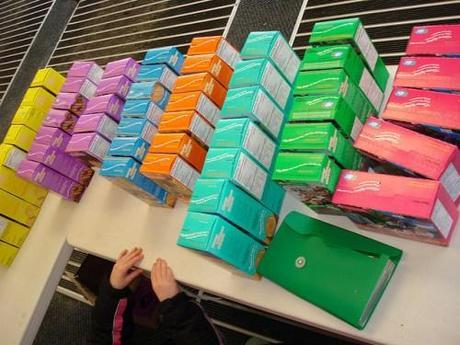Wasted Girl Scout cookies are just the tip of the huge pile of wasted food in the U.S.

Aka Kath, Flicr Creative Commons
From my column at Communities @ Washington Times
WASHINGTON DC, February 17, 2013 – A report of 13,200 boxes of Girl Scout cookies destroyed in a Riverside, California warehouse before being taken to a local landfill has raised controversy and brings light to the issue of wasted food in the U.S.
In a video released by CBS Los Angeles, a worker cheers “Goodbye, Girl Scout cookies!” The cookies had not expired and were perfectly edible before being destroyed. The video was taken in May of 2012, but this has been reportedly happening for several years.
The cookies were traced back to San Gorgonio Council of the Girl Scouts in Redlands. According to Chuck MacKinnon, the San Gorgonio spokesperson, the organization was not aware that the cookies were being trashed. MacKinnon explained that their supplier, Virginia-based ABC Bakery, allowed the organization to return 1% of unsold cookies without having to pay for them.
The cookies in question, according to MacKinnon, were those returned to ABC, and it was ABC’s decision to destroy them, unbeknownst to the Girl Scouts. MacKinnon made clear that San Gorgonio had donated over 100,000 boxes of unsold cookies last year alone.
Food banks and shelters around the country were not pleased with the news. Most, if not all, agreed that they could have used the cookies and that destroying them was a terrible waste of food.
Girl Scout headquarters in New York stated that they do not have an organization-wide policy for disposing of unsold cookies.
Food waste in the U.S.
The whole incident is indicative of a much larger problem.
The conclusion of a 2012 Issue Paper by Dana Gunders at the Natural Resource Defense Council (NRDC) is startling: 40% of food in the U.S. goes uneaten. So it’s not just the Thin Mints that are going in the landfill. According to the study, this equals roughly $165 billion, literally in the trash.
Food is wasted at every link in the chain from farm to fork. Another study by Dusseldorf Save Food Congress analyzed the difference between high and low-income countries in terms of where the heaviest waste occurs along the food supply chain. While waste in low income countries occurs primarily early in the supply chain due to poor storage facilities, poor infrastructure, inadequate transportation, lack of refrigeration, inadequate market facilities and packaging; in high-income countries like the U.S., waste occurs late in the supply chain due to aesthetic selection, waste related to food manufacture, poor temperature conditions during display, lack of planning, best-before-dates, and plain old leftovers.
The Girl Scout cookie incident is illustrative of lack of planning, where the organization ordered more cookies than it could sell and the least expensive thing to do for the organization was to return 1% of the unsold cookies, which would subsequently be destroyed by the supplier, ABC Bakery.
But there are countless other examples of the problem. Huge portion sizes nobody can finish, and consumers not understand expiration and best-by dates are just two of many. Waste has gotten so bad that we are throwing away nearly half of our food, according to NRDC.
This is even more disheartening, according to the NRDC study, considering that only a 15% reduction in our yearly waste could feed more than 25 million people. In a time where more and more Americans are struggling economically and nearly one in six lacks a secure food supply, finding a solution to waste makes more sense than ever.
The other costs of uneaten food
Besides the actual costs of the food ($165 billion per year), wasting so much food costs in terms of energy, land use, water, and environment. “Getting food from the farm to our fork eats up 10% of the total U.S. energy budget, uses 50 percent of U.S. land, and swallows 80 percent of all freshwater consumed in the United States. Yet, 40 percent of food in the United States today goes uneaten,” according to the NRDC study.
This enormous waste is also costing us in terms of waste management and the environment. According to the NRDC study, uneaten food is the largest single component of municipal solid waste in the U.S. It also “accounts for a large portion of U.S. methane emissions.”
The Girl Scout cookie “scandal” is admittedly infinitely small in comparison to the total amount of food wasted every year in this country. Nevertheless, it serves as a wake-up call to all of us.
America is wasting an enormous amount of food, and individuals, society, government and the food industry must work together to address the problem..
Check out more of my articles on Communities @ The Washington Times
